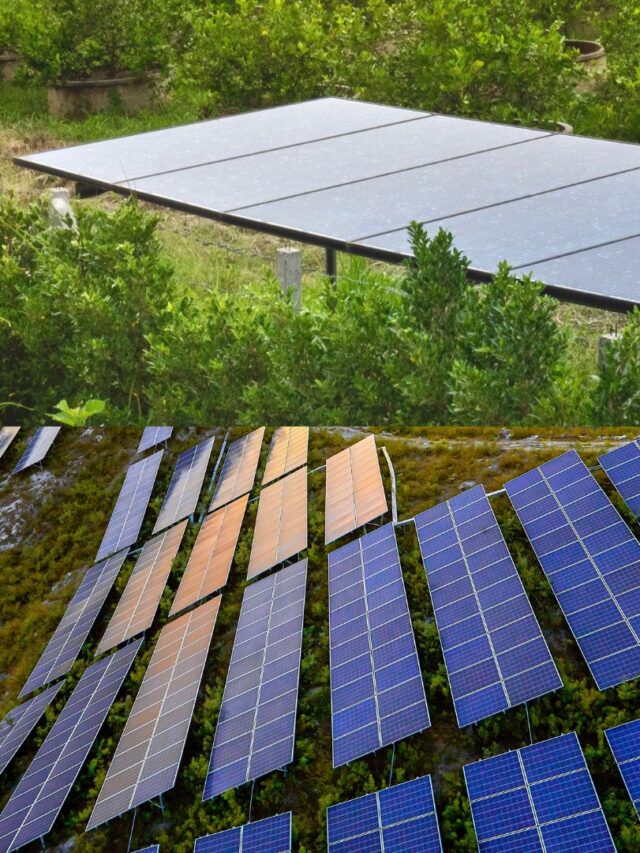
As the agricultural sector faces growing energy demands and rising costs, solar power has emerged as a sustainable solution for farming operations. By harnessing the sun’s energy, farmers can reduce reliance on fossil fuels, cut energy costs, and minimize their carbon footprint. This blog explores key applications of solar technology in agriculture, along with real-world examples of how it’s making a difference.
Solar-Powered Irrigation Systems
Irrigation is essential for crop production, but it’s also one of the most energy-intensive tasks on a farm. Solar-powered irrigation systems (SPIS) offer an eco-friendly alternative, allowing farmers to pump water using solar energy. These systems are especially useful in regions with limited or no access to the electricity grid.
Example: In India, the Pradhan Mantri Kisan Urja Suraksha evam Utthaan Mahabhiyan (PM-KUSUM) scheme has installed over 250,000 solar pumps to support farmers. According to the Ministry of New and Renewable Energy (MNRE), these solar pumps have reduced diesel use by 90%, saving farmers money and lowering carbon emissions. In Kenya, solar-powered water pumps have been instrumental in providing reliable irrigation for smallholder farmers, boosting crop yields by up to 30%.
Solar-Powered Cold Storage: Reducing Post-Harvest Losses
Post-harvest losses are a major issue for farmers, especially in developing regions where access to refrigeration is limited. Solar-powered cold storage units help preserve perishable produce by keeping them fresh for longer periods, reducing food waste and increasing farmers’ income.
Example: : In Nigeria, ColdHubs, a social enterprise, has introduced solar-powered cold storage solutions that allow smallholder farmers to store their produce longer. This innovation has reduced post-harvest losses by 80% and increased farmers’ income by 25%, as reported by the Food and Agriculture Organization (FAO). In India, similar solar refrigeration units are helping dairy farmers preserve milk, reducing spoilage and improving profitability.
Solar Greenhouses: Extending Growing Seasons
Solar greenhouses use solar panels not only to generate electricity but also to regulate temperature, humidity, and light levels, creating optimal growing conditions. This allows farmers to grow crops year-round, even in regions with harsh climates.
Example: In China,solar greenhouses have become popular in the northern provinces, where winter temperatures drop significantly. These greenhouses use passive solar heating and photovoltaic panels to maintain a stable internal environment, enabling year-round vegetable production even in sub-zero conditions. According to China’s Ministry of Agriculture, solar greenhouses have improved crop productivity by 25% and reduced energy consumption by 60%. In Canada, similar greenhouses are used to grow high-value crops like tomatoes and peppers during winter months.
Solar-Powered Drying Systems
Solar dryers harness sunlight to dehydrate crops, a method that enhances shelf life, maintains nutritional quality, and prevents mold growth. Unlike traditional drying methods that rely on electricity or fuel, solar-powered systems offer a cost-effective and environmentally friendly solution.
Example: Companies like SUNSUL provide solar-powered drying solutions
tailored for fruits, vegetables, and grains. This technology helps farmers in off-grid areas preserve their produce efficiently, reducing post-harvest losses and promoting sustainable food preservation.
Solar Electric Fences
Protecting crops from wildlife and livestock is crucial for farmers, and solar electric fences offer a reliable and sustainable solution. Powered by solar panels, these fences create a low-voltage electric barrier that deters animals without causing harm.
Example:Zareba Systems is a leading provider of solar-powered electric fencing. Their systems are easy to install in remote areas and reduce the need for constant manual monitoring. By using solar energy, farmers can save labor costs and protect their crops more effectively.
Quick Benefits of Solar-Powered Farming
Lower energy costs
Improved crop yields
Reduced post-harvest losses
Year-round farming capabilities
Sustainable pest and crop protection
Concluding Thought
The integration of solar power into farming practices demonstrates how renewable energy can address common agricultural challenges. From preserving crops with solar dryers to safeguarding fields with electric fences, these innovations contribute to a more efficient, sustainable, and eco-friendly agricultural sector.
By adopting solar technology, farmers aren’t just addressing today’s needs—they’re building a future that’s cleaner, smarter, and more sustainable.
Events like AgriNext 2025 will highlight these breakthroughs, connecting innovators, experts, and changemakers to explore how solar and smart tech can power the farms of tomorrow.
Signup For AgriNext Conference Newsletter


